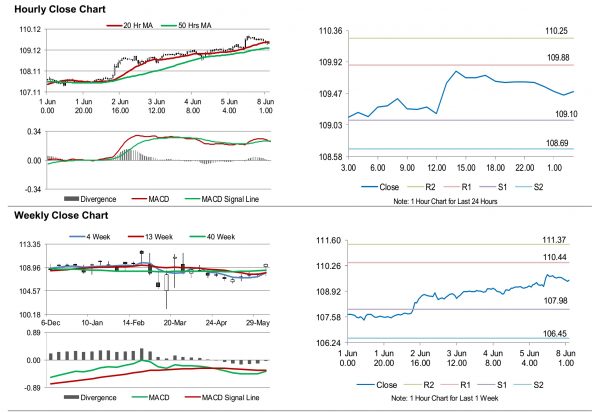For the 24 hours to 23:00 GMT, the USD declined 0.46% against the JPY and closed at 109.64 on Friday.
On the data front, Japan’s leading economic index dropped to 76.2 in April, reaching its lowest level since 2009 and more than market expectations for a drop to a level of 80.5. In the previous month, the index had recorded a revised reading of 85.1. Additionally, the coincident index unexpectedly fell to 81.5 in April, defying market expectations for a rise to a level of 90.3 and compared to a revised reading of 88.8 in the previous month.
In the Asian session, at GMT0300, the pair is trading at 109.50, with the USD trading 0.13% lower against the JPY from Friday’s close.
Overnight data showed that Japan’s annualised gross domestic product fell 2.2% in the first quarter of 2020, and compared to a fall of 7.3% in the previous quarter. The preliminary figures had recorded a fall of 3.4%. Moreover, current account surplus narrowed to ¥262.7 billion in April, more than market forecast for a surplus of ¥480.0 billion and compared to a revised surplus of ¥1971.0 billion in the previous month. Furthermore, trade balance recorded a deficit of ¥966.5 billion in April, compared to a surplus ¥103.1 billion in the prior month.
The pair is expected to find support at 109.10, and a fall through could take it to the next support level of 108.69. The pair is expected to find its first resistance at 109.88, and a rise through could take it to the next resistance level of 110.25.
Amid lack of macroeconomic releases in Japan today, investor sentiment would be determined by global macroeconomic factors.
The currency pair is showing convergence with its 20 Hr moving average and trading above its 50 Hr moving average.















